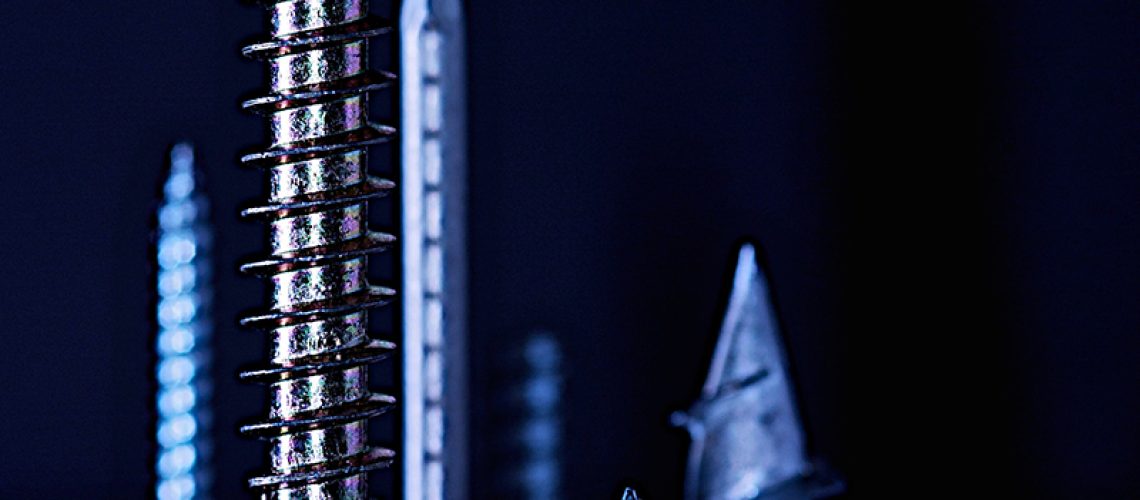Fasteners are an essential building material for the industry, but do you know the difference between the various types of steel and stainless steel products? Used in the wrong place, they are not going to stand the test of time.
Fasteners are an essential building material for the industry, but do you know the difference between the various types of steel and stainless steel products? Used in the wrong place, they are not going to stand the test of time.
Fasteners, such as bolts, nails and screws, are used in timber-framed construction to hold structural components together and attach claddings to the frame. Holding power (withdrawal resistance) and corrosion performance are probably the most important concerns when choosing fasteners.
Improperly specified fasteners can loosen when timber shrinks and swells with moisture cycling. Deterioration of fasteners from corrosion not only weakens the fastener, but the chemicals generated by corrosion can also attack timber surrounding the fastener. This significantly reduces the holding ability of the fastener-timber assembly. Corrosion resistance is particularly important for fasteners in joints that are taken apart and reassembled for maintenance.
Range of metal fasteners
Fasteners used in building and construction are made from metals including aluminium, brass, copper, mild steel and stainless steel.
Fasteners with zinc coatings are usually chosen when corrosion and staining resistance are required. These coatings are applied onto fasteners by several processing techniques – electroplating, hot-dip galvanising and mechanical plating. The structural properties are different for each of these coatings, hence they react differently to their environment.
MILD STEEL
Mild steel, mainly made of iron, is the most widely used material. It has high formability, good tensile strength and a low cost. However, mild steel fasteners are not durable outdoors. The inescapable fact is that iron in the presence of oxygen and water will rust.
ELECTROPLATING
In electroplating, zinc coatings are applied by electrolysis in an electrolytic cell containing a solution of zinc salt and an electric current. They have a bright and silvery appearance with a smooth surface. These smooth coatings have a homogeneous structure, and the interface between the coating and the steel substrate is sharp. The adhesion is governed by the surface cleaning process before plating. Coating thickness typically ranges from 7–15 μm.
MECHANICAL PLATING
Mechanical plating is a batch process carried out in a rotating drum. The steel part is tumbled in a mixture of zinc dust, chemicals (promoter or accelerator), glass beads and water. The coating is impacted onto the steel surface by the cold welding of fine-powdered zinc particles through the tumbling action. As a result, the coating consists of flattened particles of zinc loosely bonded together. The adhesion of the zinc to the steel and zinc to zinc is weaker than the metallurgical bond formed during hot-dip galvanising but is better than an electroplated coating. Coating thickness typically ranges from 5–70 μm.
HOT-DIP GALVANISING
In hot-dip galvanising (HDG), items are immersed into a molten zinc bath of 445–455°C for 3–6 minutes. The zinc coating produced is integral with the underlying steel through several hard iron-zinc alloy layers that are overcoated with pure zinc. There is no real line of demarcation between the steel and the coating. This gradual transition provides a metallurgical bond. HDG coatings have excellent continuity and uniformity, and any discontinuities are readily visible as black spots. The coating has a dull and less smooth surface. Thick coatings of 50–125 μm are attainable.
Hot-dip galvanised better
Corrosion of zinc is approximately linear between mass loss and time. In other words, the service life of a zinc coating usually increases in proportion to its thickness – a thicker coating will last longer. Generally, electroplated and mechanically plated zinc coatings have lower thicknesses than hot-dip galvanised coatings. In addition, coatings on sharp edges, corners and threads have lower thicknesses due to the nature of the electrochemical and mechanical processes. Localised failures are more likely, especially if there are physical defects in the coating.
Thickness alone doesn’t tell the whole story when comparing coatings – consider the amount of available zinc per unit volume. Hot-dip galvanised coatings have a higher density with over 30% more zinc per unit volume than mechanically plated coatings and so should offer about 30% better corrosion resistance under identical service conditions.
Hot-dip galvanised coatings have a series of iron-zinc alloy layers, while electroplated and mechanically plated coatings have a simpler homogeneous structure composed of pure zinc. The iron-zinc phases have a higher corrosion resistance than zinc in neutral and acidic environments. Also, without these hard abrasion-resistant iron-zinc alloy layers, more structural defects (scratches or debonding) are likely to be introduced into the relatively soft pure zinc layer when the fasteners are driven into the timber.
BRANZ tests have shown that mechanically plated nails are commonly inferior to hot-dip galvanised nails under identical conditions. Corrosion typically starts on edges and corners where the coating is thinner. Although some accelerated tests are claimed to show that electroplated zinc coatings have a comparable corrosion resistance to hot-dip galvanised coatings, in use, it has been found that most fasteners with zinc plating will not provide adequate corrosion protection in long-term external exposures. This is supported by AS 3566: Self-drilling screws for the building and construction industries, that states screws with electroplated zinc coatings (passivated) of <12 μm thick should only be used in internal and dry areas.
Check what you are buying
Fasteners with a zinc coating are often marked ‘galvanised’. This is misleading, as galvanised implies items coated by hot-dipping. Zinc coatings produced by electroplating and mechanical plating are significantly different in their structural characteristics and corrosion performance.
Take care when buying fasteners – examine them to check they are the type needed.
Stainless steel best choice
Stainless steel is well known in industry for its excellent environmental stability. This extraordinary characteristic is related to the formation of a thin chromium-rich passive film on its surface when exposed to oxygen and water. Once formed, this film can largely inhibit reactions between the metallic substrate and the environment, resulting in a reaction rate that is several orders of magnitude lower.
DIFFERENT STAINLESS STEELS
Stainless steels for fasteners can be divided into three main categories: austenitic, ferritic and martensitic. These steels have different phase structures and compositions and so have differing abilities to form the passive film.
Austenitic stainless steels are non-hardenable, non-magnetic and offer the greatest degree of corrosion resistance. Typical alloys are the 300 series. AISI 304 works well in most atmospheres. AISI 316 is better still, especially in marine environments due to its higher molybdenum content.
Common ferritic stainless steels for fasteners are AISI 410, 416 and 431. AISI 430 and 430F are the best martensitic alloys for fasteners. Ferritic and martensitic steels are mainly used for economic reasons and where corrosion resistance requirements are not too severe.
Stainless steel fasteners are more durable than zinc-coated steel fasteners. Field testing carried out at BRANZ’s Judgeford site confirmed that bolts, nails and screws made of AISI 304 and 316 stainless steel showed very little degradation even in timbers treated with ACQ and CuAz preservatives, known to be more corrosive than CCA (see page 37). Stainless steel fasteners also reduce the possibility of staining.
LOWER COST OVER LIFETIME
The material cost for stainless steel fasteners might be high compared with hot-dip galvanised fasteners. However, the overall cost of ownership will generally be lower as a result of the reduced inspection and maintenance needed to ensure the fasteners are still sound.
Please Note since it was first published Branz would like to add that” if stainless steel fasteners are to be used, the minimum is grade 304 according to NZS3604:2011 (the article mentioned several grades of stainless steels). In addition, another article – Selecting nails and screws for 50-year durability is a good reference for this purpose.”
This article has been reprinted with permission from BRANZ

